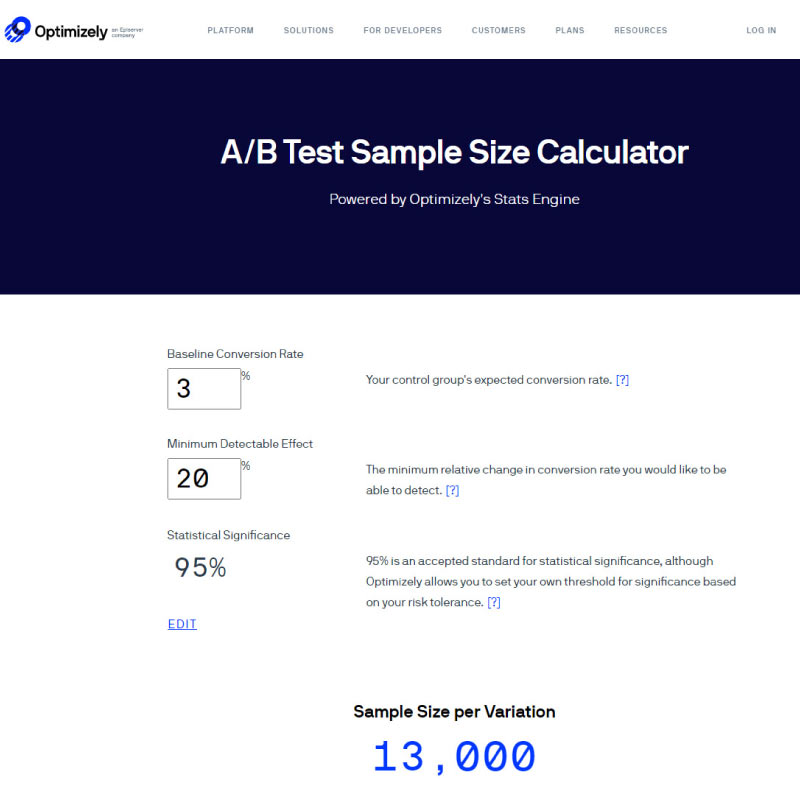You need data to make smarter business and marketing decisions. But the battle to get just enough (but not too much!) data is tricky.
And how do you know if you have the right data?
When it comes to conversion rate optimization, because it involves so many different aspects of marketing, some practitioners' data recommendations can sometimes be a little one-sided.
More...
Quantitative Data is Necessary for Conversion Rate Optimization
Some conversion rate optimization practitioners emphasize using primarily quantitative data to make business decisions. They'll present seemingly logical hypotheses and recommend running A/B and multivariate tests as a method to find winning copy and online purchase experiences.
And their approach isn't a bad thing, but they're missing half of the data needed to create better hypotheses to generate and run their quantitative tests.
They're missing out on the data that tells you WHY your customers make their buying decisions. And that's a massive chunk of insight your business can't afford to miss.

Old Data is Only a Part of the Customer Story
When the person in charge of optimizing your website conversion rate is working off only historical data (and anything that comes out of Google Analytics is historical data), they’re well equipped to make generalizations.
But your customers aren’t grouped by generalizations. And making sweeping generalizations about your customers’ purchase inclinations can be dangerous to your business. Stereotypes can be incorrect and completely miss the mark when you’re trying to make a compelling argument for why a prospect should become a customer.
You need qualitative data to add flavor and substance to your customer segments and the qualitative data can be a guiding force in identifying your ideal customer.

Optimization Based on Quantitative Data - Requires a Lot of Quantitative Data
So, when you need to start A/B testing and want a high degree of confidence in the results, how much data is enough data?
Optimizely has an A/B Sample Size Calculator so you can see exactly how much traffic you’ll need for a statistically significant A/B test.
Many companies and even startups don’t have the volume of data (or traffic) to run quantitative optimization tests that generate statistically relevant results. They may have enough to run tests with a low confidence level but if you’re going through the effort of running tests, don’t you want to trust the results?
If you measure changes in customer online behavior over time and you’re not considering radical changes and shifts (and the qualitative reasons for those shifts), the likelihood of coming to the wrong conclusion when you dig into the source of that change is pretty high.
Suppose you were to measure the conversion changes from an email marketing program and didn’t consider the thousands of people who lost their jobs in Q1 and Q2 of 2020 because of COVID-19 (and whose email addresses suddenly vaporized). You’d have an incomplete picture of what happened. Sure, you could report on the fact that your bounce rate rocketed, your opens plummeted, and your conversions were a fraction of what they used to be, but you’re missing the “WHY” in your results.

Granted, this is an extreme and obvious example. And it’s not logically possible to factor in every single qualitative element that impacted your marketing or conversion optimization efforts. But there is a real human need (because you’re selling to humans) for quantitative data to find a home in your testing and optimization efforts.

You Need to Include Qualitative Data in Your Conversion Optimization
Relying on quantitative data alone to generate lift in your conversion rate is a short-sided shortcut. I can’t fault anyone for doing what they can today to increase the number of conversions because we all have goals and we all want to keep generating revenue.
But sometimes, making small usability changes, or copy changes, or even updating a landing page to message match a paid search campaign can generate more lift, faster, than running tests based on half the data needed to make smart decisions.
Including quantitative data and research gives you an edge:
- Know your ideal prospects, values, attitudes, and beliefs.
- Know their objections to purchase and how to overcome them using copy, social proof, and visuals.
- Understand how much information and time they need to make a purchase decision, and meet them where they are with the information they need so they can build a compelling business case and purchase your product.

Qualitative Data Isn’t Hard to Find or Gather
It may take a little time to gather the types and quantity of data you need, but finding qualitative data sources isn’t difficult.
Qualitative data examples include:
- Voice of Customer (VoC) Research - the words and phrases that your customers use to describe their pain or need for your product. Helpful beyond just feeding them to your SEO and PPC teams as keyword fodder. Also incredibly helpful for generating conversion-focused copy for your website, emails, ads, and communication points.
- Qualitative or Objection Surveys
- Customer Interviews
- Focus groups
- Live chat and support transcripts
- Review mining from your reviews or your competitor’s reviews
- Usability studies - watch a representative set of customers use your website or product and how they perform a specific set of tasks. Usability testing tells you where your customers struggle, when processes or steps are unclear or confusing, and you get real-world first-person feedback.
- Message testing - test your copy, messages, and understand how your customers see and perceive your product based on what they see on your website or in your marketing copy. Similar to usability testing but for messaging and copy.
- Segmentation & personas - Beyond identifiers like household income and gender (and not cobbled together by a creative director under the gun to justify his “creative vision”), Segments and Personas help you understand how different groups of customers think, feel and act towards your product and how their motivations naturally group them into different customer groups.

Qualitative Data IS Measurable
For example, outcomes from a usability study are measurable. If most respondents complain that the pricing page is confusing, that is a quantifiable qualitative data piece.
If your support tickets show a pattern of complaints about an integration error, that is also a measurable piece of qualitative data.
If your customer success team sees a spike in first-year customer churn and exit survey data that says your product is too complicated to use daily, that’s measurable qualitative data.
Qualitative data isn’t a grey amorphous cloud that’s impossible to pin down. Qualitative data analysis doesn’t require a crystal ball or an advanced data science degree.
It does take time to gather and effort to combine data from multiple sources, but if you need to connect with your customers, if you’re looking to build a product that your customers use, love, and recommend, you have to include quantitative data in the acquisitions process. Otherwise, you’re going to wind up with customers who aren’t invested in your product or renewing their agreements.

Qualitative Data Brings the Humanity to Your Conversion Optimization Efforts
When you use only quantitative data to boost your conversion rate, you’re short-changing your customers and your company. You’re only getting half the information you need to make smarter decisions.
Some conversion rate optimization (CRO) practitioners believe you can jump in and optimize conversion rates without any qualitative data from customers.
I don’t believe this. Not for a second. That’s why I build in a research component to every client project. It may vary in size and complexity, but it’s there. It’s a non-negotiable part of my process.
Your customers may say they make logical decisions, but humans always include emotion when making decisions. If you don’t know what those emotions are, the arguments prospects make, and how to overcome objections in a way that’s meaningful to your prospect, you’ve already lost the game.
Qualitative data gathering and analysis isn’t a touchy-feely crystal ball analysis. Qualitative research generates measurable data. You need to know how to gather and interpret it in a way that results in a useable format.
Qualitative and quantitative data both have their strengths. A good CRO practitioner will use both qualitative and quantitative data to help you reach your conversion goals.
Want help reaching your conversion optimization and revenue goals quickly and smartly? Hit me up and let's chat about your biggest opportunities.

